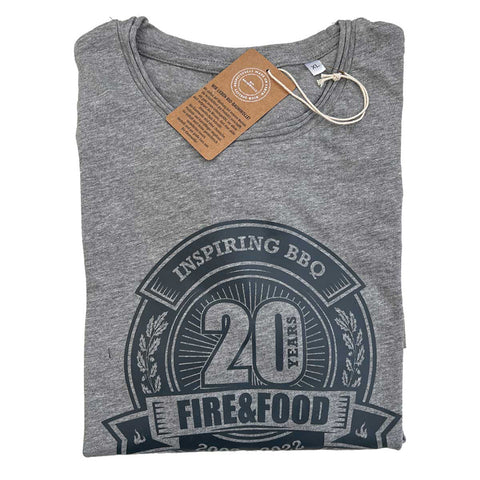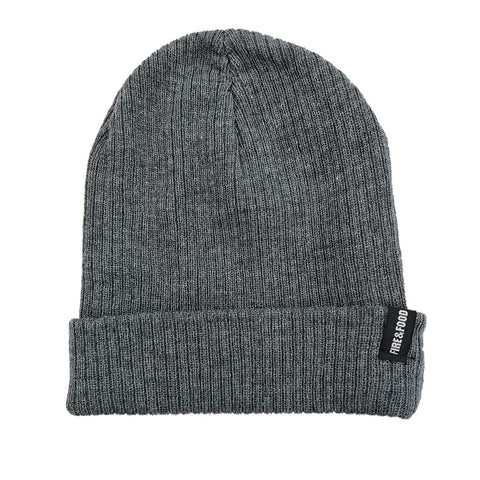Why a Dutch Oven?
The Dutch oven is probably the most popular cooking appliance among grillers that is not a grill. The black pots have been enjoying steadily increasing demand for years, which makes grill retailers happy and parcel carriers despair. After all, the Dutch oven, or DO or DOpf for short, is a solid piece of cast iron that weighs a few kilograms. A short excursion into the history of the "DOpf".
Story
The Dutch Oven, Black Pot or Camp Oven, as we know it today, has a predecessor in the so-called Grapen. These three-legged pots were initially made of clay, then of bronze, and were only made of cast iron towards the end of their "career". The Grapen, in use since the 12th century, was either hung over the fireplace or placed directly in the embers. In comparison to the DO, however, they had a bulbous shape that prevented the food from burning, as the liquid could always collect at the lowest and hottest point. A similar device is known from Eastern Europe and Asia under the name Chugun or Kazan. However, the "multifunctional lid" typical of many DOs was almost never used here. At least the Grapen was so common that it can even be found on some coats of arms. But how exactly did the Grapen become the Dutch Oven? The most important prerequisite was the ability to produce cast iron cheaply. This, coupled with the requirement that the end product should also be inexpensive, led to a pot shape that was rather simple compared to the sometimes elaborately decorated gropen. There are various theories as to how this came to be called "Dutch oven". One says that the Dutch had very advanced manufacturing processes for cast iron (pots) in the 18th century. The use of sand molds in particular was considered very advanced at the time with regard to the smooth surface finish of the end products. So advanced, in fact, that an Englishman named Abraham Darby is said to have copied the production process and established it in England. The name Dutch oven is said to have come about in reference to the country of origin of the manufacturing technology.
The second theory is that the pots were brought to the USA by German and/or Dutch settlers and from Pennsylvania they began their triumphal march through God's own country. It is generally assumed that the origin of the pot can be found among the Pennsylvania Dutch, which is a complete confusion of names, because while "dutch" actually means Dutch, the name Pennsylvania Dutch is actually incorrectly derived from "Pennsylvania German". In any case, the settlers there mostly came from the Palatinate. Therefore, the Dutch oven would be historically correct as a German oven. However, the USA is not the only country where the DOpf is known; it is also used in a similar form in Australia and South Africa, where it is known as Potjie, while in the Netherlands it is known as "braadpan".
Whatever the true story may be, the fact is that the cast iron pot began its triumphal march in the settlers' luggage and as a constant companion of the treks and cowboys, which is why it is also called the Chuck Oven, which roughly means "food pot".
There are stands for Dutch ovens that do not have feet. For models with feet, there is also an option for this, for example to get more distance from the floor or simply as a coaster for the table.
Why a Dutch Oven?
The Dutch oven seems to have a long history, but why should we still use it today? After all, we now have cast aluminum, Teflon and high-tech ceramics. First of all, there is a very simple reason: the comparatively coarse cast iron is predestined for use with coals and open fires. After all, nobody wants to hang their chrome-plated kitchen pots over a flame until they turn blue. In addition to this more aesthetic reason, there is also a technical argument for the Dutch oven. It is unbeatable as a casserole dish, roaster and baking device in terms of even temperature distribution. Once heated up, even a light breeze will not upset it, especially since the side walls are just as hot as the base or the lid. The thick material can both transport this heat well and thus distribute it evenly to the contents and also store it. It is not without reason that some cookware manufacturers also make roasters and casserole dishes from cast iron. Cast iron has another property: it improves the taste of the food the more often it is used. This is simply because fats and aromas collect in the porous material and are then discreetly released the next time it is used. The DOs have this in common with roasting pans, cast iron and steel pans and cast iron casseroles. But what distinguishes the Dutch oven from these?
Characteristics
The typical Dutch oven has cast feet that allow the pot to be placed directly in the embers of a fire. Grillers also like to use briquettes and place the good piece on top of them. In individual cases there are also models without feet that are then placed in the fire on a separate frame. Advantage: Such models also work on the stove or on the hotplate of a smoker. Also typical of the Dutch oven is the lid with the raised edge. It serves to hold embers/briquettes on the lid and thus generate top heat. If the lid itself also has feet, it can also be used as a frying pan. The Dutch oven always has a carrying handle that not only makes transport easier, but above all also serves to hang the pot on a tripod or otherwise over the fire. The conical shape is inherent in the Dutch oven, so the diameter becomes slightly smaller towards the bottom. It is also worth mentioning that the pots from one and the same manufacturer can often be stacked one inside the other in terms of size. The size is given either in the form of the diameter in inches or in quarts (qt), with 1 qt being 1.14 l in British measurements and 946 ml in US measurements. There is not much more to say, simply because the Dutch oven is otherwise so simple. The question arises as to where exactly the differences between the individual models can be found. The answer to this can be found in our inexpensive e-dossier "Dutch Oven Test" .





















